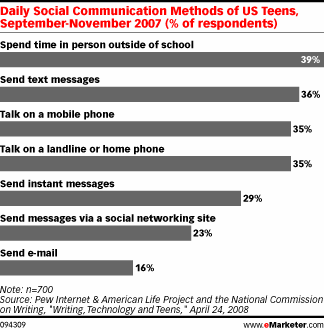I did a post a few days ago around the high level themes from our Online Marketing Summit called “Stop Selling, Start Giving”. There were enough very practical tactics that emerged from the event that I thought I would share some below.
SEO:
- The best time to think about SEO is when building a new site. When using any good CMS system, such as Drupal or Joomla, be sure to use their SEO plug-in modules. It will make it very tough to not have SEO on the site.
- Links are very important, particularly ratio of inbound links to outbound links. Also, the deeper and more specific you can have links to the site (rather than just all to the homepage) that will improve the SEO of the site and pages. Make sure your content is structured in such a way that incents people to point to deeper pages.
- SEO is a process involving content creation, engineering head count, links, technology, and budget. Create commitment to SEO in the organization. Hiring one person cannot change an organization or generate real SEO value. Consider allocating 10% of engineering time to SEO work. The best practitioners have everyone in the organization focused and thinking about it.
- Resources: SEOmoz.com, Conductor.com
SEM/PPC
- Before you spend your budget on an SEM campaign, be sure to take 10% of it FIRST and do a test run. You can save yourself some major embarassment in case something was not set right and to further tweak.
- Be very careful using BroadMatch – you could spend money in a heartbeat on terms that are not related to your product or service.
- Keyword research is critical. Lots of tools out there can help, but also thinking about negative keywords, plural vs singular, etc, are all ways to create variation.
- Resources: Clickable’s free guide SEM best practices and tips
Community
- Create a community and empower it to set directions – a censored community is not one at all. Manage but “with a light touch”. Allow users to moderate content.
- Recognition is key for community growth – tiered structures, badges, experts, rewards (virtual or physical) are great ways to accomplish this.
- Transparency is critical – if you have an issue, publicly engage the community and tell them what is going on. Building trust is paramount to a vibrant community.
- Measure the community – post activities, engagement, session lengths, etc. The numbers will tell you if your community is active and thriving. If it’s not working, find out why! It’s usually something you did.
- Email is NOT for acquisition, it is for retention!
- The FROM and SUBJECT alone determine if someone opens – the questions they are asking are “DO I KNOW YOU?” AND “DO I CARE?” respectively. Answer those questions well.
- Build your lists organically by providing VALUE to users such that they want the information rather than a marketing message. Use things like questions that your customer service receives as material for future newsletters. You dont need dozens of articles – a few targeted ones that serve a purpose and give value to customers is better.
- Create links back to specific pages on your site so you can track activity and users interests.
- Make sure you have a sign-up form on ALL pages of your site. Customize the thank you note when someone does sign up – show genuine appreciation for signing up.
- Most people have images off in their email clients – dont have a huge picture at the top or users will see a big X instead of a message in their preview screen.
- Testing is key – treat email just like PPC.
- Use the word “Feedback” instead of “Survey” – people are much more willing to provide feedback than take a survey. One improves their life, another takes time from their life.
Marketing Automation
- If you can read the “Digital Body Language” of how customers are interacting with your site, content, and marketing activities, you can calculate how likely they are to buy and where they are in sales cycle.
- Lead scoring is critical to understand when marketing activities transition to sales type of activities.
- Separating FIT of buyer from ENGAGEMENT of a user is critical. A key decision maker doing a few things online and a summer intern doing a lot online should not have the same lead score. A CEO doing A LOT is the ideal. Segment those rigidly and pass on to sales things at the closest intersection to improve MQL close rates.
Integrated Marketing Approach – Case Study of Omniture
- Marketing commits to generating 35-80% of sales accepted leads, and in closing 35-40% of deals in a quarter. If you do not know what number you are responsible for, you are not strategic.
- Dont do live webinars – record and push it out there – allow your customers to sign on when they can, fast forward to what they want, and interact as they wish.
- It’s hard to find online marketing savvy folks. If you cant find someone smart, hire an inexperienced, smart person and send him/her to get certifications: DMA, AdWords, etc. Make sure they have gone through the formal trainings – well worth the investment, and smart people without legacy biases will get this system.
- Map your marketing process to a sales process – someone looking deep on product page is much further in a funnel than someone downloading whitepapers. Know that and automate.
- Sample mix of budget: 25% Site and Content, SEO 15%, SEM 15%, Email 20%, 3rd Party Emails 10%, Display Ads 5%, Newsletters 3%, Tradeshows 7%.
John Deighton’s definition of Interactive Marketing: “The ability to address the customer, remember what the customer says and address the customer again in a way that illustrates that we remember what the customer has told us.”
Any other suggestions, please post below!!



